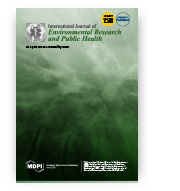Do Body Composition and Values of Selected Nutritional Status Indices Influence the Glycaemic Index Values of Vegetarian Dishes? A Pilot Study in a Group of Older Women
Ewa Raczkowska, Maciej Bienkiewicz, Robert Gajda, Monika Bronkowska, Ewa Piotrowska, Marta Habánová
International Journal of Environmental Research and Public Health
Ministerial score = 140.0
Journal Impact Factor (2022) = 4.614 (Q1)
 An ageing population brings with it the need for public policy to respond to the demands and health needs of this group of people. The ageing process has been shown to be associated with changes in body composition. These mainly concern a decrease in muscle mass and an increase in body fat. Body composition and other indicators of nutritional status are important factors differentiating carbohydrate management. Glycaemic index (GI) values may be affected by differences resulting from individual metabolism. The rate of carbohydrate digestion is also influenced by a number of factors, including the degree to which the product is processed, the structure of the starch, and the presence of protein, fat and dietary fibre. Available studies do not provide information on the glycaemic response following the consumption of specific products by older people with varying BMI and body composition. Therefore, the aim of this study was to evaluate the effect of the body mass index (BMI) values of women aged 50–80 years on the glycaemic response after eating vegetarian meals and the influence of selected indices of nutritional status on their GI values. It has been shown that the areas under the glycaemic curves after the consumption of the tested foods, both traditional and modified, are higher in the group of overweight and obese women. Nevertheless, the GI of meals consumed by those with a BMI ≥ 25.0 kg/m2 is lower than that of foods consumed by women with normal values of this index. In the group of women with BMI 18.5–24.9 kg/m2, on the basis of an analysis of the obtained correlations, it was observed that the GI value of modified products depends on the percentage of body fat (FM%) (p = 0.0363) and the percentage of fat free mass (FFM%) (p = 0.0363), and, in the case of traditional products, also on the percentage of total body water (%) (p = 0.0133). In the group of women with a BMI ≥ 25.0 kg/m2, significant correlations were only found between the GI of modified foods and the waist-to-hip ratio (WHR) (p = 0.0363) and the ratio of waist circumference to height (WHtR) (p = 0.0369) indices. The GI values of food set solely with the participation of young, healthy people should not be the basis for the nutrition planning of all groups of people.
An ageing population brings with it the need for public policy to respond to the demands and health needs of this group of people. The ageing process has been shown to be associated with changes in body composition. These mainly concern a decrease in muscle mass and an increase in body fat. Body composition and other indicators of nutritional status are important factors differentiating carbohydrate management. Glycaemic index (GI) values may be affected by differences resulting from individual metabolism. The rate of carbohydrate digestion is also influenced by a number of factors, including the degree to which the product is processed, the structure of the starch, and the presence of protein, fat and dietary fibre. Available studies do not provide information on the glycaemic response following the consumption of specific products by older people with varying BMI and body composition. Therefore, the aim of this study was to evaluate the effect of the body mass index (BMI) values of women aged 50–80 years on the glycaemic response after eating vegetarian meals and the influence of selected indices of nutritional status on their GI values. It has been shown that the areas under the glycaemic curves after the consumption of the tested foods, both traditional and modified, are higher in the group of overweight and obese women. Nevertheless, the GI of meals consumed by those with a BMI ≥ 25.0 kg/m2 is lower than that of foods consumed by women with normal values of this index. In the group of women with BMI 18.5–24.9 kg/m2, on the basis of an analysis of the obtained correlations, it was observed that the GI value of modified products depends on the percentage of body fat (FM%) (p = 0.0363) and the percentage of fat free mass (FFM%) (p = 0.0363), and, in the case of traditional products, also on the percentage of total body water (%) (p = 0.0133). In the group of women with a BMI ≥ 25.0 kg/m2, significant correlations were only found between the GI of modified foods and the waist-to-hip ratio (WHR) (p = 0.0363) and the ratio of waist circumference to height (WHtR) (p = 0.0369) indices. The GI values of food set solely with the participation of young, healthy people should not be the basis for the nutrition planning of all groups of people.
DOI:10.3390/ijerph19169918









